Repiping Glossary
A homeowner's resource for whole house repipe and repiping terms commonly used and their associated meanings.
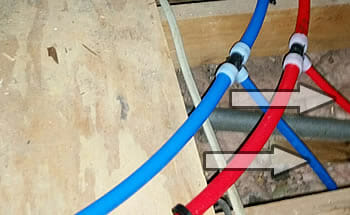
Branching Lines
Lines of pipe that connect horizontal pipes to points of access such as sink and tub faucets, washing machines, spigots, and showerheads. In most cases, branching lines drop down from the horizontal pipes in your attic, serving as vertical pipes in your wall connecting to various facilities in your bathroom, laundry room, and kitchen. These pipes are replaced during a whole-home repipe, but aren’t touched during a horizontal repipe.
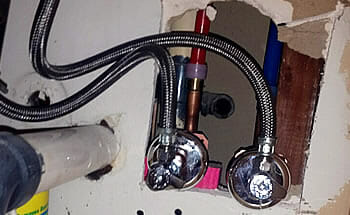
Changeover
The part of the whole-home repiping process in which your home’s potable water system is shut-off and newly installed pipes are tied-in to your home’s faucets and facilities. This step of the repipe process typically takes one to two days, but John Moore techs are trained to always communicate with homeowners and prioritize the areas of piping that should be changed over first.

Copper Piping
Refers to pipes and piping systems made from copper. Although copper piping systems are the oldest type of piping systems- dating back to Ancient Egypt- and are superior to galvanized piping systems, their rigidness, high price, and susceptibility to corrosion makes copper distribution systems inferior to piping systems that use PEX pipes. Some copper piping is used when repiping your home with PEX for outdoor spigots and tie-ins that go into or come out of a wall because copper is more durable than PEX when it comes to exposure to sunlight, UV rays, and other outdoor conditions.
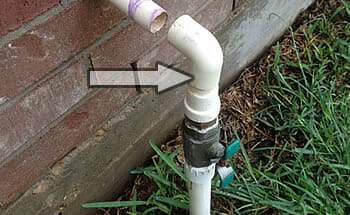
CPVC Piping
Pipes made from CPVC or chlorinated polyvinyl chloride. CPVC pipes are less susceptible to corrosion than metal pipes made from copper or galvanized steel, and they are also more flexible. But CPVC pipes are not as flexible as PEX pipes, meaning they are still susceptible to cracking during freezing conditions and require the use of more connections.
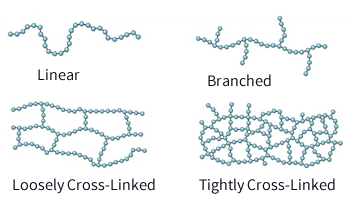
Cross Links
Bond that link polymer chains together. Oftentimes, crosslinking is used to make a material more elastic without compromising its strength. For instance, the synthetic rubber used in vehicle tires are made by crosslinked rubber. Crosslinked Polyethylene (PEX) can expand up to three and a half times its original diameter and return back to it’s original size without any strain on the material.

Distribution Pipes / Water Supply Pipes
The pressurized pipes that carry hot and cold potable water throughout your home. These pipes connect to the potable water supply line and include both horizontal pipes and branching lines. A whole-home repipe will replace all the distribution pipes in your home with a new piping system.
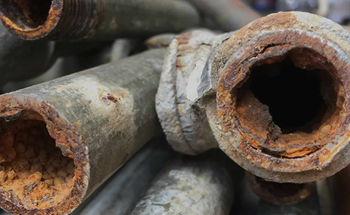
Galvanized Pipes
Pipes made from galvanized steel. The galvanization process (adding a layer of zinc coating to the steel) is supposed to prevent the pipe from rusting as fast as it would without a zinc coating. Unfortunately, out of all the available piping solutions, galvanized pipes are still the most susceptible to corrosion. Galvanized steel pipes are by far the heaviest and most cumbersome piping material on the market, making them the least economical repiping solution.
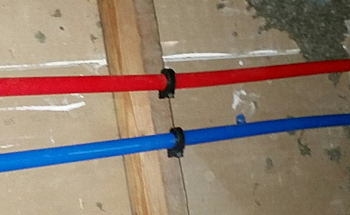
Horizontal Repipe
When the only pipes replaced in a home are the horizontal potable water distribution pipes, typically located in the attic. John Moore usually recommends a whole-home repipe over a horizontal repipe, because if there are pin-holes and rust spots on the pipes in your attic, chances are there are rust, holes, and potential areas for leaks to occur in your home’s branching lines and vertical pipes in your walls.
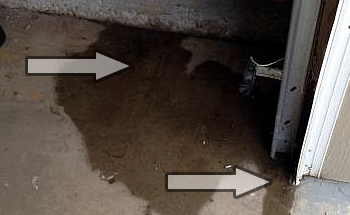
Looped Slab Copper
Another common water distribution system found in homes built in the 1960s to the early 2000s. Unlike most water distribution systems, looped slab copper systems were built underneath homes, which makes the signs of a leak and the repair process slightly different than a galvanized piping system. Common signs of a leaking looped slab copper system are watermarks found on the lower walls of a home or a noticeably high water resulting from water leaking into the the ground.
Leaks in a looped slab copper system can be fixed with a single line reroute, although we highly recommend a whole-home repipe to replace the entire system with a PEX system if there are any signs of leaking.
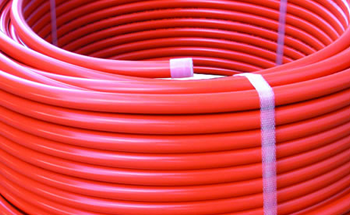
PEX Piping or Crosslinked Polyethylene Piping
A flexible piping system made from a High Density Polyethylene polymer that is resistant to scale and chlorine, doesn’t corrode or develop pinholes, and is faster to install than CPVC or metal piping.

Pinholes / Pinhole Leaks
Pinholes are holes in your pipe where rust has eaten all the way through, resulting in a little hole. Typically, pinholes are covered in rust spots because holes in rusty pressurized potable water pipes are quickly clogged by rust debris creating a “scab” of sorts. Water that drips or streams out of pinholes is referred to as a pinhole leak.
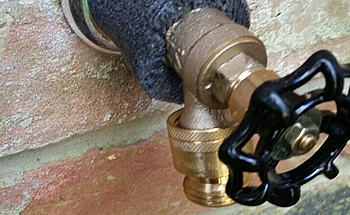
Point of Use (POU)
The location of a water device - like a water heater or filter- for a given demand source, like a sink, shower, or tub. For instance, carbon filter’s point of use (POU) is at the faucet while a whole home filter’s point of use is where the potable water line connects to your home. If you want a water filtration system that reduces the impact that the chemicals used to treat water has on your pipes, the POU of that filter must be before the water enters your home.

Potable Water
Clean water running through your home used for drinking, cooking, cleaning, bathing, and washing. And water balloons.
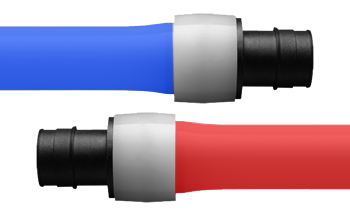
ProPEX® Expansion Fitting System
A pipe connection system used exclusively on Uponor PEX pipes. The ProPEX® expansion fitting system is possibly the strongest method for connecting pipes on the market today. Instead of crimping around the pipe connection or relying on threaded areas of the pipe that screw together, ProPEX® expansion fitting relies on PEX pipes’ unique ability to always return to its original size resulting in more than a thousand pounds of force squeezing around the fitting. And don’t worry; fittings used in ProPEX® expansion fitting system are designed to withstand this extreme amount of pressure.

Rust Spots
Reddish-brownish spots on your pipe, sometimes referred to as “scabs” or “cancer marks” by John Moore technicians. These spots are areas where your pipe has rusted all the way through creating a pin-hole that becomes clogged with rust debris.
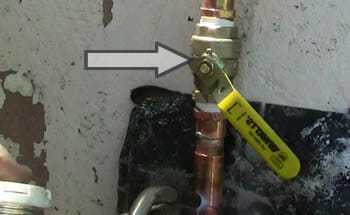
Safety Shut Off Valve
A valve on your home’s pressurized potable water supply system that allows for the safe closing off of water to your home’s piping system. This switch is used to “turn off” the flow of potable water in your home when a changeover is being done.

Tie-In
The connection of a pipe to a facility (sink, toilet, faucet), other pipe systems, or another section of pipe.
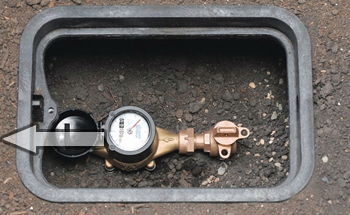
Water Service Pipe
The pipe leading to your home’s water distribution system. This pipe is connected to the main water line that supplies water to all the homes and buildings in your area. This pipe is not replaced during a horizontal or whole-home repipe.

Whole Home Repipe
When your home’s entire pressurized potable water distribution system is replaced with a new one. John Moore’s whole-home repipes are typically carried out using Uponor’s AquaPEX® pipes as distribution pipes and copper tie-ins for any pipes that go into or out of a wall.
